Psychoeducation: Teaching Kids About The Fight or Flight Instinct
What’s inside this article: An overview of what psychoeducation is, and how parents can use psychoeducation to help when their children are struggling with emotional regulation, by teaching them fight or flight and how their brain works.
When parents are faced with the challenge of tackling difficult behavior like meltdowns and angry outbursts, they often look to solutions such as different discipline strategies, offering rewards, taking away privileges, etc.
There is a myriad of different parenting strategies out there, something for every parenting style.
But one thing that not many parents consider, probably because it’s actually a therapeutic intervention and not a parenting technique (but it can be), is psychoeducation.
Psychoeducation can help children with mental health challenges, like anxiety or OCD, as well as children with ADHD, ASD, ODD, and other conditions.
What is psychoeducation?
In psychology, psychoeducation means providing education and information to those seeking or receiving mental health services, such as people diagnosed with mental health conditions and their family members.
As a parent or educator, it’s about teaching kids or teens about how their brains work and why they sometimes react the way they do.
Psychoeducation can also mean teaching more about topics that worry children because, as the old saying goes, knowledge is power.
For example, if a child has a phobia of spiders, learning about how rare it is for spiders to bite and how most spiders are relatively harmless might help them.
Meltdowns & Outbursts
Does your child struggle with complex behavior challenges like meltdowns and outbursts?
This is often a challenge for children who find emotional regulation difficult. If you’re unfamiliar with why meltdowns occur, take some time to read about the sympathetic nervous system here.
If your child experiences meltdowns, you may see behaviors such as:
- Strong refusal/non-compliance
- Yelling or screaming
- Running away
- Hiding
- Hitting
- Breaking or throwing things
- Spitting
- Self-harm
As parents, these are some of the most difficult and isolating behaviors we encounter. However, it’s important to understand why these kinds of behaviors occur so we can address them appropriately.
But it’s equally important to help your child understand why they do these things because, as a child, feeling and behaving this way can trigger a lot of shame, guilt, and low self-esteem.
A lot of the time, children don’t even understand their emotions, so simply having big emotions is completely overwhelming and leads to meltdowns. Then, kids can feel like there is something wrong with them because they can’t control their behavior.
What most kids don’t know—and many parents don’t either—is that these intense reactions are normal brain responses. The problem is that they happen more frequently than necessary due to lagging skills in social-emotional development.
And that normal brain response that I’m talking about is called the Fight or Flight Instinct.
Fight or Flight Instinct
You’ve probably heard of fight or flight before; it’s also sometimes referred to as fight, flight, or freeze.
It’s a stress response that happens in our bodies when something is mentally or physically terrifying or too overwhelming for us.
It’s a survival instinct that actually involves one part of our brain (the amygdala) to shut off communication with the prefrontal cortex, sometimes called the “thinking brain.”
Then we are reacting but we aren’t really in control of our behavior.
I recorded this short video below to explain how this works and why some children seem to be in this state so often.
Why is Psychoeducation Important for Kids?
When children (and adults) have a thorough understanding of how their brains work and why they react the way that they do, they feel more in control of their behavior.
They also become more aware of their own triggers, understand and notice stress earlier, and understand the importance of learning different coping and calming skills.
How to Teach Kids about Fight or Flight and How Their Brain Works
I created an illustrated narrative for kids and teens that explains, in a very simple-to-understand way, how the brain works, what fight or flight is, and why it happens.
There is a link at the end of this post to download this narrative for free.
What’s in the Narrative?
Your Brain: Explaining Fight or Flight to Kids
First, the printable explains that different parts of our brain have their own jobs. It highlights some important areas of the brain and then briefly describes what that part of the brain does.

This includes how all the areas of the brain work together. The text covers the prefrontal cortex (the thinking brain) and the amygdala (where fight-or-flight is activated).
Then, it describes how if you’re in danger, overwhelmed, or really upset and the thinking brain isn’t able to do its job, the amygdala takes over.

When the amygdala takes over, the prefrontal cortex is “locked away.”
It explains some of the behaviors that happen during fight or flight and how a person may feel like they have no control over their actions.
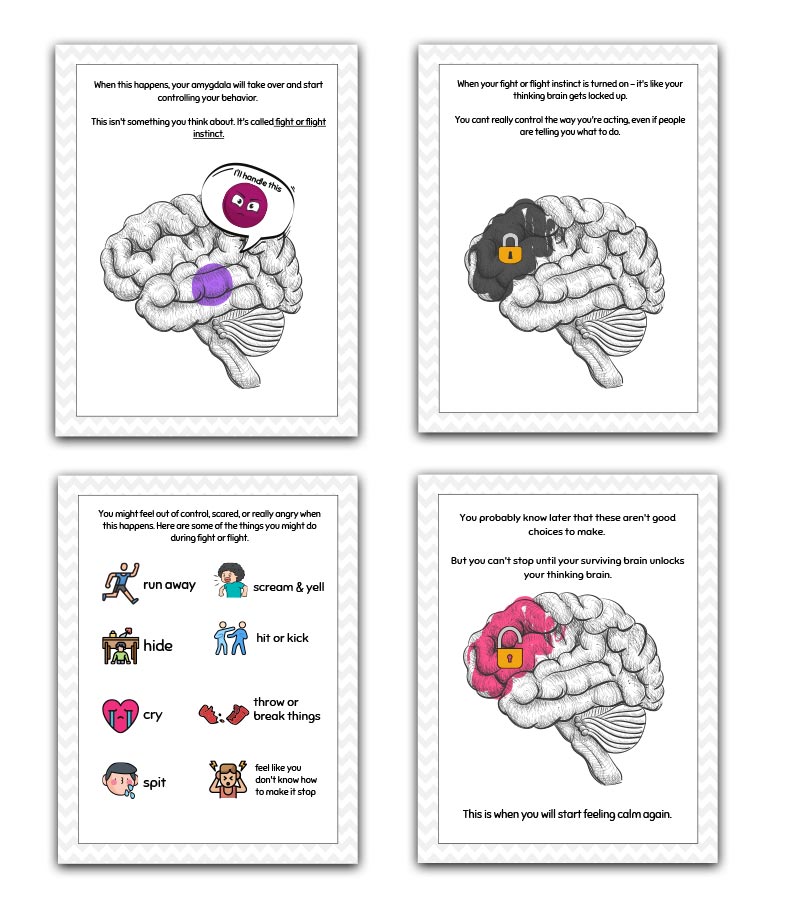
Lastly, the text explains that this can happen to everyone. It’s a natural brain response.
The text goes on to explain how the more skills the thinking brain has, the less often it feels like it can’t do its job. When the thinking brain doesn’t feel overwhelmed, then the fight or flight instinct doesn’t take over as often.
The last page is a list of skills you can “teach” your thinking brain to help it get better at its job.

Note: This product is available for free. I do not want any financial barriers to prevent parents from downloading it if their children need it.
However, on the check-out page, you will be asked if you’d like to thank me with a $5 payment. This is a voluntary payment that helps support my work, and you are not obligated to do so.
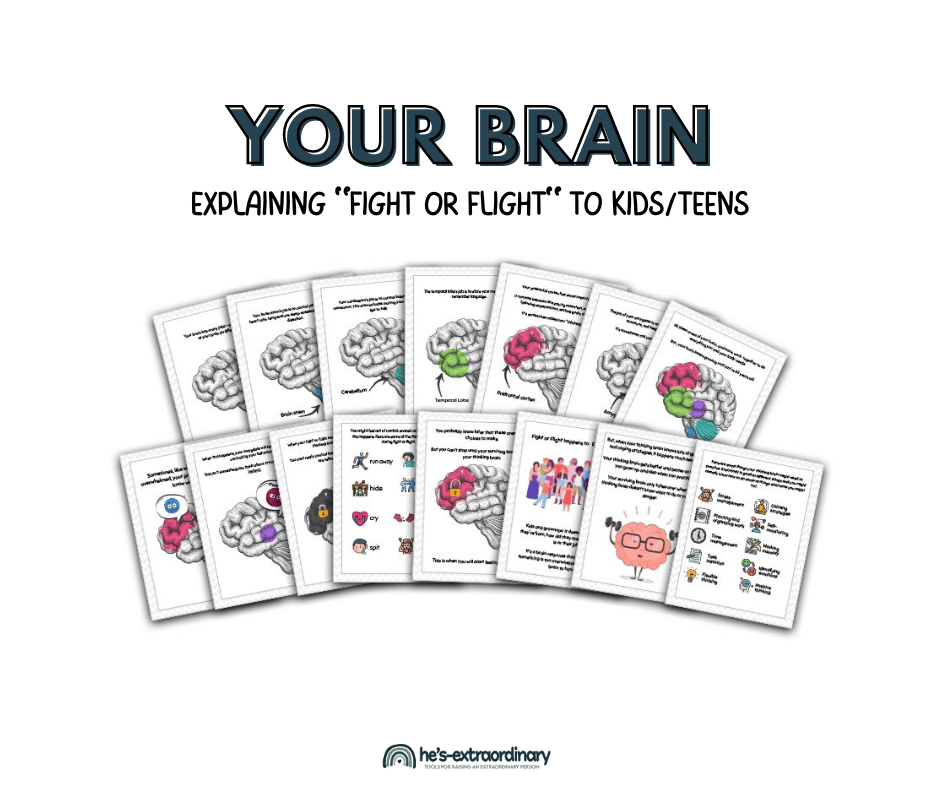
Your Brain
Explaining Fight or Flight to Kids
15 page, easy to understand narrative, that helps children and teens understand how their brain works, and what the fight or flight instinct is. This tool is useful for psychoeducation.
The last page of the printable covers some skills that kids may need to learn or practice to improve their stress management and behavior.
I have created blog posts and/or printables about some of these skills. You can check out the links below for more information on specific skills.

Kids Anger Management – How to Help Children Manage Anger
What’s inside this article: Skill-building activities, printables, and books that help children develop anger management skills and learn healthy anger coping techniques. Disclaimer: This post contains affiliate links. Anger management is an essential skill…
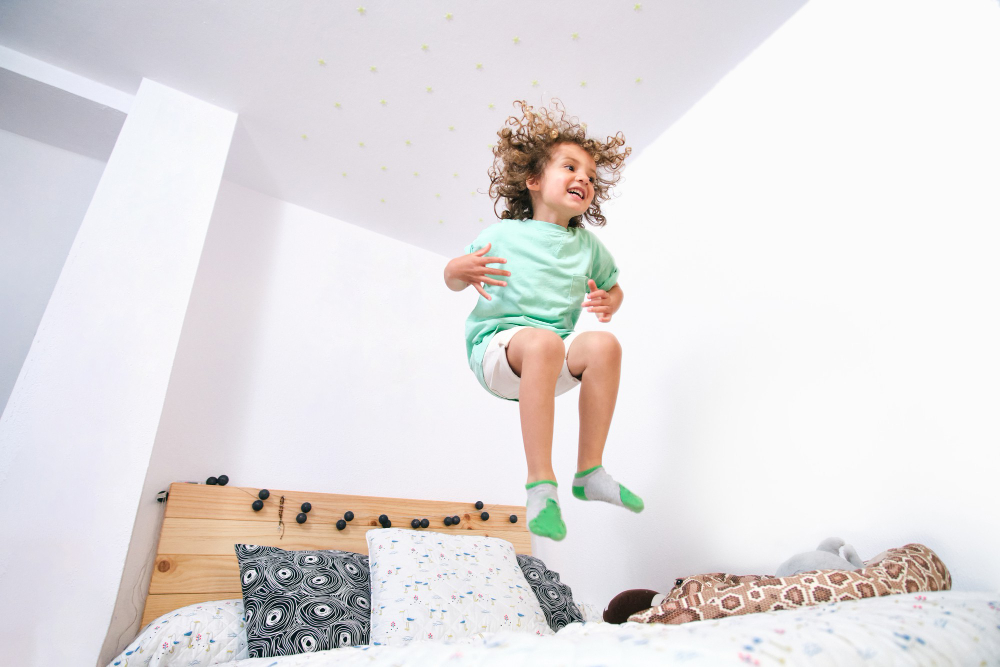
Boosting Effortful Control: Strategies and Techniques
What’s inside this article: A look at developing effortful control, an essential skill for children’s’ success. Including what research tells us, activities, and parenting styles that promote the healthy development of effortful control….

Social-Emotional Learning Begins at Home – Here’s How to Do It
What’s inside this article: An overview of what social-emotional learning is, which skills it encompasses, why it’s so important for child development, and tips for parents to provide SEL in the home. Disclaimer:…
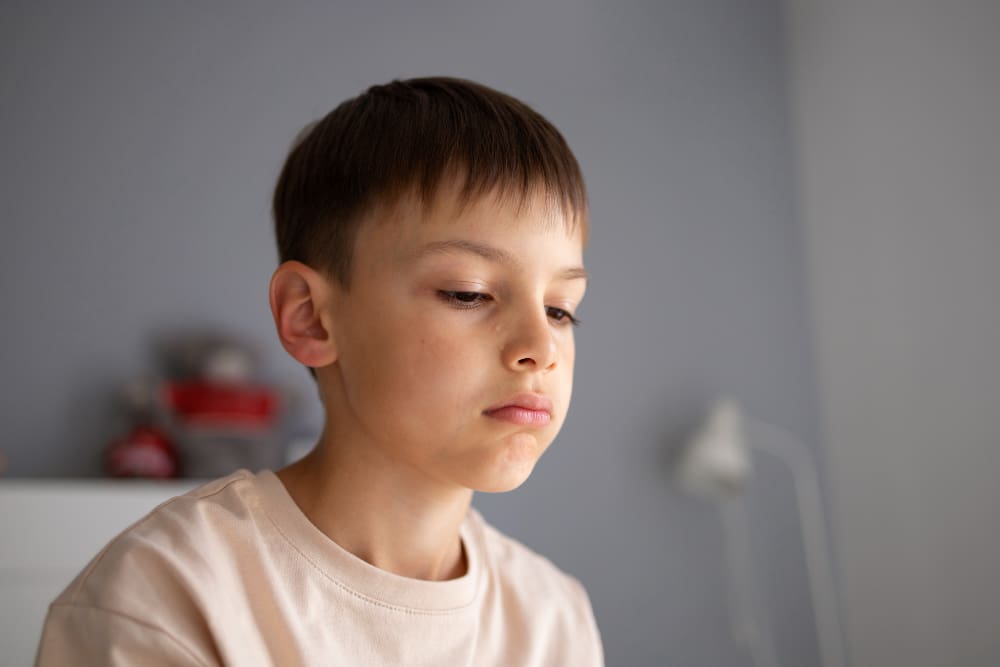
Negative Thinking Patterns That are Giving Your Child Anxiety
What’s inside this article: Six forms of negative thinking patterns that contribute to anxiety in kids with examples to help you recognize these thinking patterns and strategies that help children reframe their thoughts…
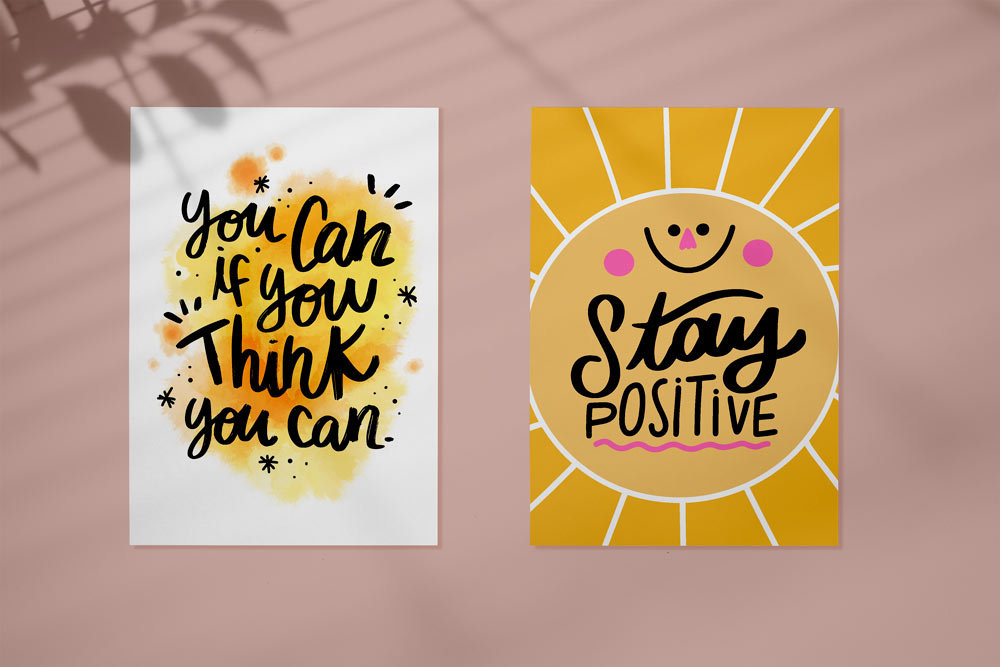
Positive Affirmations for Kids
What’s inside this article: A huge list of positive affirmations for kids, the benefits of using them, and ideas for when and how to use them in daily activities, and a printable worksheet…
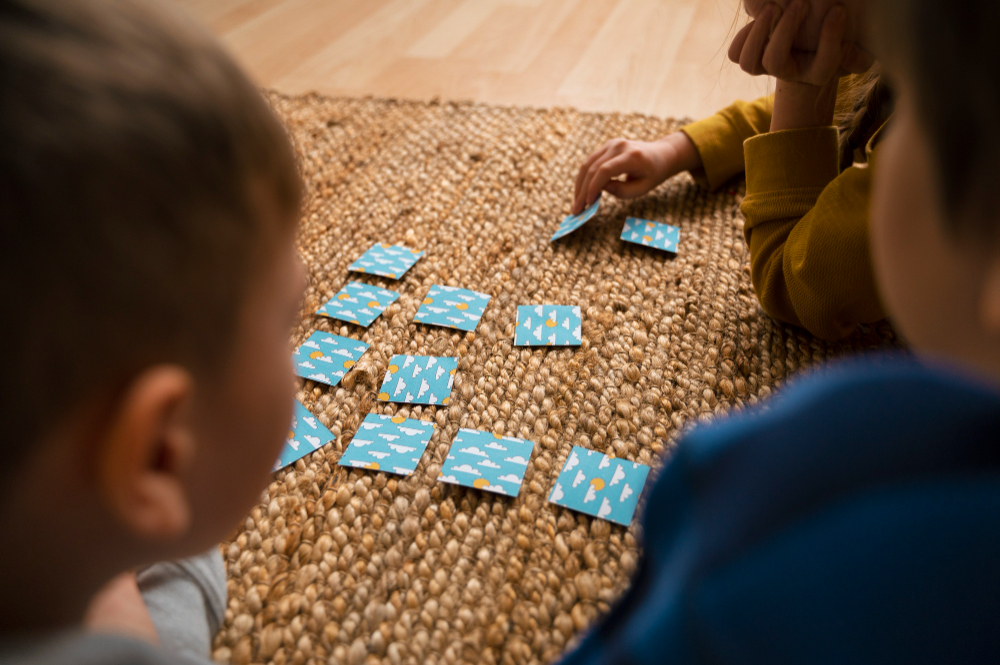
What is Working Memory? How to Identify Challenges and Easy Ways to Build Skills in Kids
What’s inside this article: In this article, we’ll explore what working memory is and why it’s so important. We’ll discuss the common signs of poor working memory in children, provide helpful accommodations to…

9 Ways to Improve Cognitive Flexibility And Reduce Rigid Behavior
What’s inside this article: Strategies that help children with autism to think more flexibly and ways to help reduce the impact of rigid thinking on day to day life such as coping strategies…
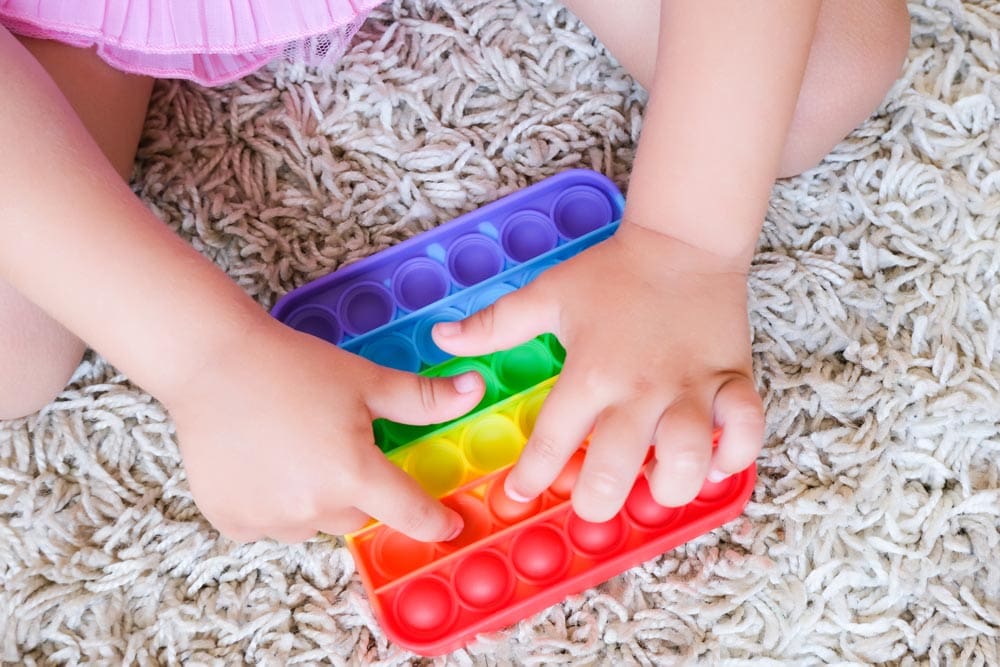
120 Emotional Self-Regulation Ideas for Kids
What’s inside this article: A look at different forms of emotional regulation, how to choose strategies that are effective for your child(ren), and a list of 120 emotional regulation ideas to inspire you…

